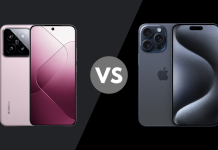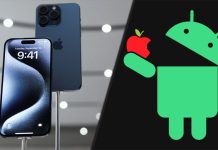Apple has filed a patent for a keyboard that could potentially revolutionize the way we type. The new patent application, published this week by the US Patent and Trademark Office, shows that Apple is working on a technology that would allow future keyboards to show different symbols depending on context.
Apple’s latest patent application envisions transformative keyboard technology for MacBook
Currently, the backlighting technology in Apple’s MacBook keyboards serves only to make the keys visible in dark environments. The keys themselves are labeled with pre-printed symbols that are static and cannot be changed, and are potentially prone to wear with long-term use.
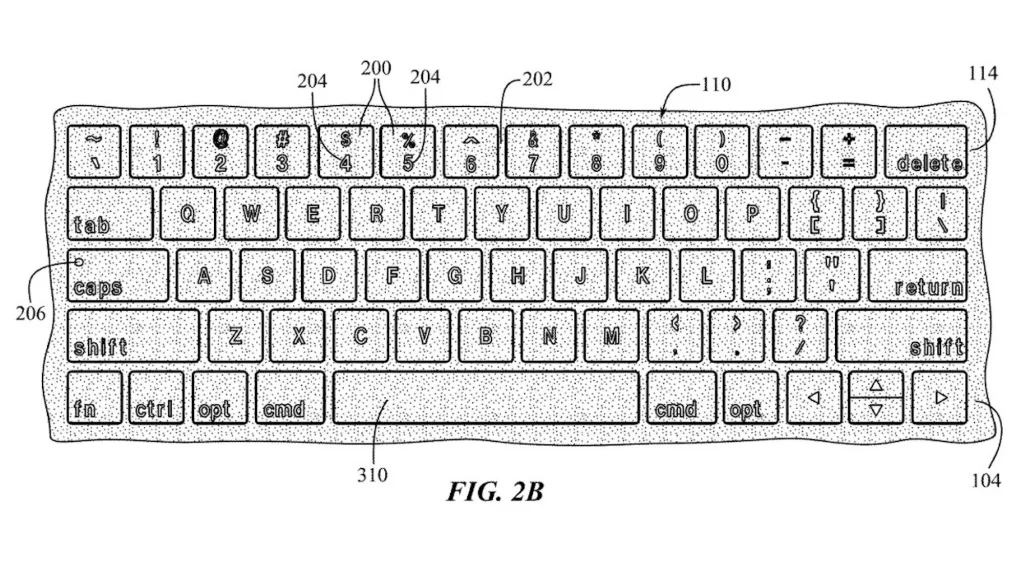
The patent application published this week addresses these issues by imagining a keyboard where each key has perforations through the top and bottom layers. The backlighting beneath the keyboard would then be able to intelligently illuminate each key to show different symbols and letters. When the keyboard is activated, glyphs for each of the keycaps could appear on the keys due to light emitted through the keycaps from beneath the top surfaces of the keycaps.
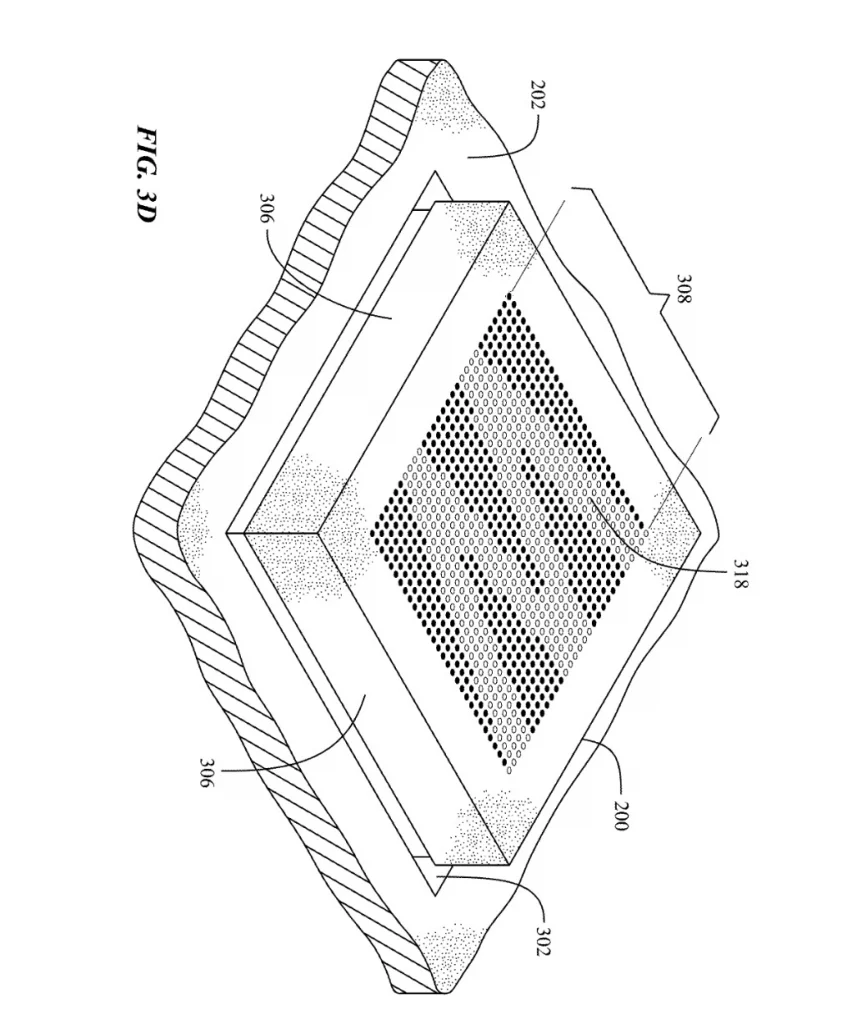
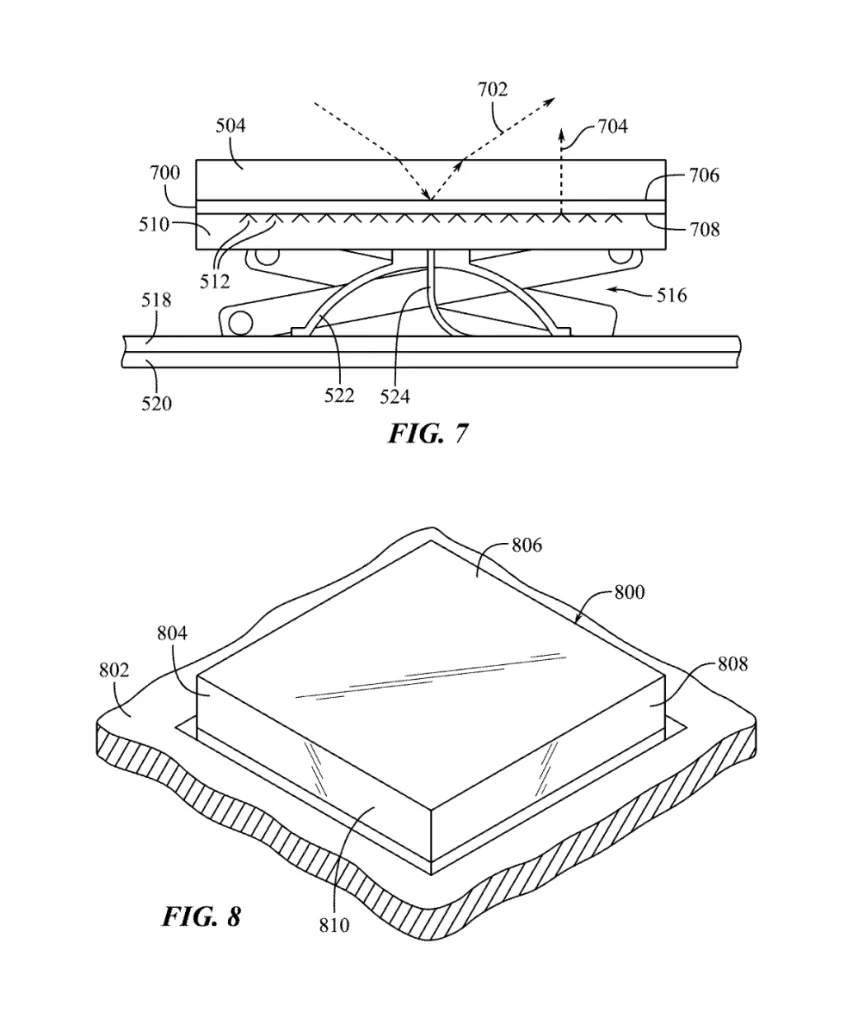
The glyphs could appear to float due to individual light sources or displays that are positioned on or under each of the keycaps. All of the light output by the light sources or displays could be directed through the top of the keycaps to generate the glyphs, as compared to conventional keyboards where light typically bleeds between adjacent keycaps or is visible between or below the keycaps.
The patent application also imagines another scenario where the light source is an “array of LEDs such as a display using micro-LED or OLED pixels.” This would be a more advanced implementation of the idea, with additional controls, customization options, and general flexibility. In this scenario, the perforations in the keycaps could correspond in number to the pixels of the display, so that each single pixel of the display could provide light to one single perforation.
This would allow the displays/light sources to be controlled to generate glyphs that are changeable or adjustable between different shapes, letters, colors, symbols, animations, languages, and other features.
Apple’s filing also includes some imagery showing mockups of how this technology could work. The patent application explains that using this construction, the keycaps of the keyboard could be made with materials not typically used in keycaps for conventional keyboards, such as metals including aluminum. This would allow the keycaps to have top surfaces that match the appearance of the housing surfaces of the keyboard surrounding the keycaps, which may also have metal surfaces.
Apple explains its patent as follows
“When the keyboard is activated, however, glyphs for each of the keycaps can appear on the keys due to light emitted through the keycaps from beneath the top surfaces of the keycaps. The glyphs can appear to float due to individual light sources or displays that are positioned on or under each of the keycaps. Thus, all of the light output by the light sources or displays can be directed through the top of the keycaps to generate the glyphs, as compared to conventional keyboards where light typically bleeds between adjacent keycaps or is visible between or below the keycaps.“
“In some embodiments, the light sources or displays can include an array of LEDs such as a display using micro-LED or OLED pixels. The perforations in the keycaps can correspond in number to the pixels of the display so that, for example, each single pixel of the display can provide light to one single perforation. In this manner, the displays/light sources can be controlled to generate glyphs that are changeable or adjustable between different shapes, letters, colors, symbols, animations, languages, and other features.”
It is important to note that this is simply a patent application and there is no guarantee that this technology will be developed or released. However, the filing shows that Apple is constantly considering new technologies and is working to advance its keyboard technology in order to provide users with a more advanced and convenient typing experience.
RELATED:
- Apple’s Satellite Plans Could Extend Beyond Emergencies
- Apple To Reportedly Allow Third Party App Stores On iPhones And iPads
- Apple Rolls out Support For 5G Network in its iPhones in India with iOS 16.2 Update
- Apple Uses Sony’s Camera Sensor for its iPhones; Confirmed Officially
- Apple iPhone 14’s emergency feature helps rescue couple from car accident
(via)


